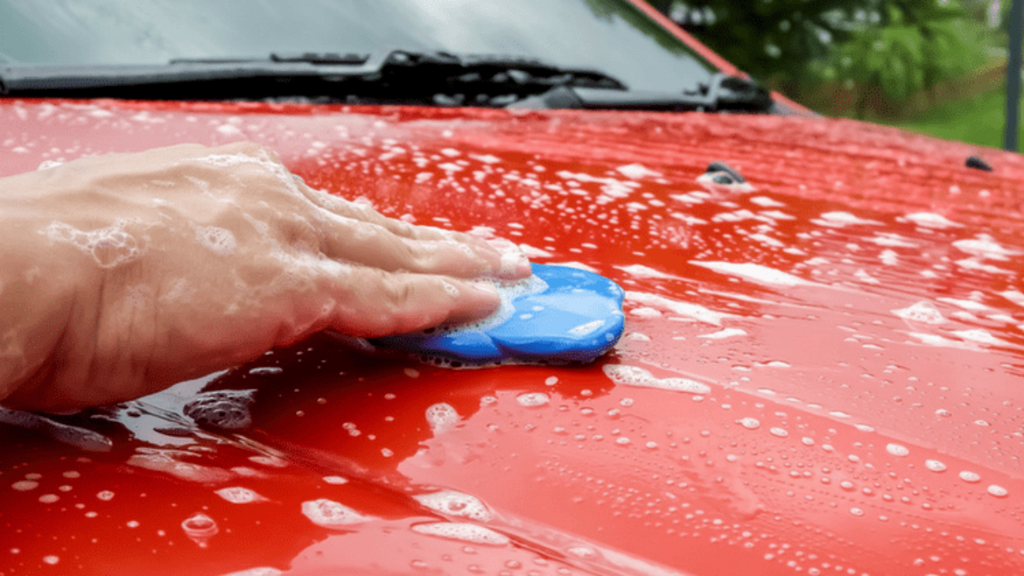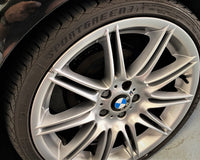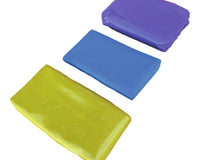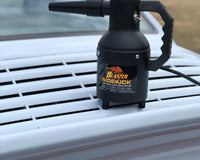Water spots on cars are a common nuisance that can detract from the beauty and shine of your vehicle. They occur when water droplets evaporate, leaving behind mineral deposits and contaminants that adhere to the car's surface. If left untreated, these water spots can etch into the paint and become even more challenging to remove. However, with the right techniques and tools, you can effectively eliminate water spots and restore your car's pristine appearance. This ultimate guide will walk you through the step-by-step process of removing water spots from your car.
Gather the Necessary Tools
Before you begin, gather the following tools and materials to ensure an effective and safe water spot removal process:
- Car wash soap
- Two buckets (one for soapy water and one for rinsing)
- Microfiber wash mitt or sponge
- Microfiber towels
- Car clay bar or clay mitt
- Water spot remover or vinegar (white distilled vinegar or apple cider vinegar)
- Car wax or sealant
- Applicator pads or polishing machine
Wash Your Car
Properly washing your car is a fundamental step in the water spot removal process. It not only helps to remove loose dirt and contaminants but also ensures that any substances that may contribute to water spot formation are eliminated.
To get started, park your car in a shaded area to prevent the soap from drying on the surface too quickly, which can cause water spots. Follow these steps for an effective car wash:
- Gather the Necessary Supplies: Prepare two buckets—one for soapy water and one for rinsing—to employ the two-bucket method. The two-bucket method helps prevent reintroducing dirt and debris back onto the car's surface, reducing the risk of scratching the paint.
- Rinse the Car: Use a hose with a gentle stream of water to rinse the entire car thoroughly. This step helps remove loose dirt, dust, and debris, making the wash process easier.
- Prepare the Soapy Water: Fill one of the buckets with water and add a high-quality car wash soap according to the manufacturer's recommendations. Gently stir the water to create a rich lather.
- Wash the Car: Dip a clean microfiber wash mitt or sponge into the soapy water and begin washing the car from top to bottom. Start with the roof, work your way down the sides, and finish with the lower parts of the car. Use straight-line motions or a gentle circular pattern to lift dirt and contaminants from the surface. Be cautious around emblems, decals, and other sensitive areas to avoid damage.
- Rinse Frequently: Rinse the wash mitt or sponge in the second bucket with clean water after each pass over the car's surface. This will remove the dirt and contaminants from the mitt, preventing them from getting back on the car.
- Rinse the Car Thoroughly: After washing the entire car, use the hose to rinse off the soapy water completely. Make sure there are no soap residues left on the surface, as they can contribute to water spot formation.
Inspect and Assess the Water Spots
After washing the car, carefully inspect the surface for water spots. They often appear as circular, cloudy marks on the paint, glass, or chrome surfaces. Water spots can be more pronounced on darker-colored cars. Take note of their severity and location. You can inspect the marks on your car using the following inspection techniques:
Well-Lit Area: Inspect your car in a well-lit area, preferably outdoors during daylight. Natural sunlight will highlight the water spots more effectively.
Visual Examination: Carefully examine the paint, glass, and chrome surfaces of the car for any circular or cloudy marks. Move around the car to ensure you identify all the water spots.
Feel the Surface: Run your fingers gently over the suspected water spots. If they feel rough or slightly raised, it indicates the presence of mineral deposits or contaminants.
Clay Bar Treatment
After washing your car, you may notice that some water spots persist despite your efforts. In such cases, using a car clay bar or clay mitt can help remove embedded contaminants from the car's surface. The clay bar is a pliable, malleable material that safely lifts and traps contaminants without harming the paint. It is made of a soft, synthetic resin compound designed to pick up and remove contaminants that have bonded to the paint, such as road grime, tree sap, industrial fallout, and stubborn water spots. The clay bar works through a process called "claying," where it gently abrades the surface, effectively pulling contaminants from the paint.To prevent the clay bar from sticking to the surface, spray a clay lubricant or a mixture of water and car wash soap onto the area you'll be working on. This lubricant provides the necessary slip for the clay bar to glide smoothly.

Break your car into manageable sections, such as the hood, roof, doors, and fenders. Take a small piece of the clay bar and flatten it into a disc. Glide the clay bar gently over the lubricated surface using light pressure. The clay bar will grab contaminants as it moves, so you'll feel it slightly "grabbing" at first.
After “claying” each section, use a clean microfiber towel to wipe off any residue left behind by the lubricant and clay. The paint should feel exceptionally smooth to the touch.
Using Vinegar as a Water Spot Remover
If the water spots persist after the clay bar treatment, you can try using vinegar as a natural and cost-effective water spot remover. Dilute the vinegar with equal parts of water, creating a 1:1 mixture. Apply the vinegar solution to the affected areas using a soft cloth or sponge, and let it sit for a few minutes. The mild acidity of the vinegar helps dissolve mineral deposits. Afterward, rinse the area thoroughly with clean water.
It's worth noting that while vinegar can be an effective water spot remover, it's essential to use it judiciously and on a case-by-case basis. Some car manufacturers advise against using vinegar on certain paint finishes or surfaces, so it's a good idea to test the vinegar solution on a small, inconspicuous area first. Always follow up the vinegar treatment with a thorough wash and wax to protect your car's paint and prevent further water spot formation.
Commercial Water Spot Remover
For more stubborn water spots or if you prefer a specialized solution, consider using a commercial water spot remover. These products are specifically designed to dissolve mineral deposits and water spot stains from car surfaces. Follow the instructions given on the product label for the best results.
Apply the water spot remover to the affected areas following the product's instructions. Typically, you will spray or wipe the product onto the surface and allow it to dwell for a specific duration to break down the mineral deposits. Use a soft microfiber towel or applicator pad to work the product into the water spots gently.
After allowing the product to dwell, buff the treated area with a clean microfiber towel to remove the water spot remover along with the dissolved contaminants. Finally, rinse the area thoroughly with clean water to remove any remaining residue from the water spot remover.
Apply Car Wax or Sealant and Regular Maintenance
Once you've successfully removed water spots, it's crucial to protect the paint and prevent future water spot formation. Applying car wax or sealant is the final step, creating a hydrophobic barrier that repels water and contaminants.
For great results, choose the best car wax from our store and follow the instructions given on it. Using a foam applicator pad, gently apply the product in circular motions. After it hazes over, use a clean microfiber towel to buff off the residue, revealing a protected and enhanced paint surface.
Remember, Regular maintenance is essential to prevent water spots from returning. Wash your car regularly using the two-bucket method to avoid contaminating the paint. Whenever possible, park in shaded areas or use a car cover to reduce water exposure. After rain or washing, promptly dry your car to prevent mineral deposits from forming. Regularly inspect your car's surface for water spots or contaminants, addressing any issues promptly.
A prompt action is crucial in removing water spots to prevent potential damage to your car's finish. Regular care and maintenance will help keep your vehicle looking its best and protect it from the damaging effects of water spots.
By combining wax or sealant application with regular maintenance, you can safeguard your car's paint and enjoy a spot-free appearance, ensuring a lasting shine and protection for your vehicle.
Final Verdict
By following this ultimate guide, you can efficiently and effectively remove water spots from your car, restoring its shine and maintaining its overall appearance. Always take precautions and test any new products on a small, inconspicuous area before applying them to the entire vehicle. With proper care and attention, your car will remain spot-free and continue to turn heads wherever you go.




